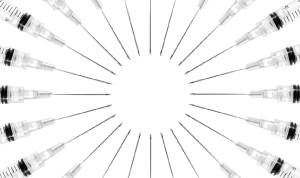Are “Rainbow Blood Draws” Still Necessary?
Tuesday November 18, 2025

Written by: Claire Knaplund, RN, BSN
Collecting multiple extra blood tubes—often referred to as “rainbow draws”—has traditionally been used in emergency departments to anticipate potential add-on testing. However, a growing body of evidence suggests that this practice often results in unnecessary blood collection, increased waste, and additional supply costs. Blue.Point customers spent approximately $2.5 M on Vacuum Collection Tubes in the most current date range.
What the Evidence Shows
Recent research consistently demonstrates that most extra tubes collected during rainbow draws are not used for patient testing:
- - A 2024 cross-sectional survey of 138 laboratories found that **57%** of laboratories routinely performed rainbow draws in the ED, but only **16%** had a formal policy guiding this practice (Potter et al., 2024).
- - A retrospective analysis of 370,601 extra tubes showed that **only 7%** were used for add-on testing, with usage particularly low in emergency departments (Knauer et al., 2023).
- - Another ED-based study reported that only **8.3%** of rainbow collections resulted in all tubes being used, contributing to more than **240 liters of wasted blood annually** at a single site (Snozek et al., 2019).
Guideline Perspective
- - No U.S. guidelines currently recommend rainbow draws, and the Clinical and Laboratory Standards Institute (CLSI) venipuncture standards **do not address** the collection of extra tubes.
- - European emergency medicine and laboratory societies explicitly **recommend against** collecting a standard set of tubes for all adult ED patients (EUSEM/EUSEN/EFLM Guidelines, 2024).
Why This Matters
- - Reducing unnecessary blood loss supports patient safety—especially in vulnerable populations.
- - During supply-chain constraints, unnecessary tube usage magnifies shortages of key tube types (light green, light blue, lavender, etc.).
- - Eliminating unused extra tubes directly reduces both waste and clinical supply expense.
- - Evidence suggests rainbow draws are a habit rather than a standard of care.
Opportunities for Improvement
Quality improvement initiatives have successfully reduced rainbow draws by:
- - Developing clear criteria for when extra tubes are clinically appropriate
- - Updating phlebotomy workflows
- - Educating staff on evidence-based practices
- - Monitoring add-on test utilization trends
Want to learn more about Blue.Point? Contact us today for a free product demo or for more information contact Jennifer Doty by email jdoty@bluepointscs.com or call 978-747-1529.
References
Potter, S., Rudolf, J. W., & Pearson, L. N. (2024). *Rainbow phlebotomy collection and urine aliquots for emergency department add-on testing in the era of pandemic-driven supply shortages*. **Laboratory Medicine, 55**(5), 585–589.
Knauer, M., Stevic, I., MacDonald, C., Bhayana, V., Bolsover, J., Smith, L., & Chin-Yee, I. (2023). *Every Tube Counts: reducing extra tubes drawn in the emergency department*. **BMJ Open Quality, 12**(4).
Snozek, C. L., Hernandez, J. S., & Traub, S. J. (2019). *“Rainbow draws” in the emergency department: clinical utility and staff perceptions*. **Journal of Applied Laboratory Medicine, 4**(2), 229–234.
Clinical and Laboratory Standards Institute (CLSI). *Procedures for the Collection of Diagnostic Blood Specimens by Venipuncture (GP41)*.
European Society for Emergency Medicine, European Society for Emergency Nursing, & European Federation of Clinical Chemistry and Laboratory Medicine Working Group. (2024). *Recommendations for blood sampling in emergency departments*.